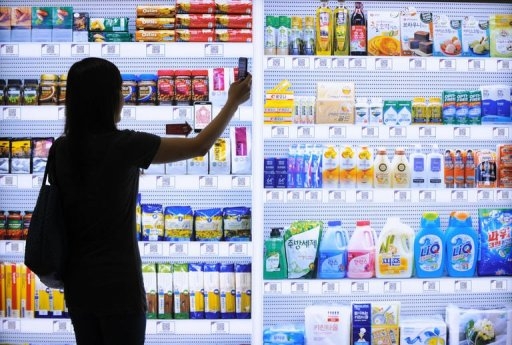Over the past few years, you may have noticed the increased use of technology in supermarkets, such as self-service checkouts, or handheld devices to scan products as you make your way round the store. With supermarkets being traditionally very labour intensive places of work, and with wages on the rise, it is clear that companies need to find a way to keep their profit levels sustainable, and reducing the amount of labour needed in stores is certainly one of these ways. However, to what extent will new technology continue to be implemented in stores, and is it only a matter of time before we have absolutely no customer-to-shop-assistant points of contact when embarking on our weekly shop? Deloitte predicts that over the next 20 years, over 2.1 million jobs will be lost from the wholesale and retail industries in the UK alone (Mesure, 2016), but is it really feasible to have fully-automated stores, and if so what effect will this have on current and potential future employees?
One man in Sweden thinks he has the answer. Robert Ilijason is an IT specialist living in the Swedish town of Viken, and has been running an almost fully automated grocery store there for the past few months. Customers must download and register on a smartphone app to even enter the store, and then proceed to scan items using their device, which they then receive an invoice for at the end of each month (Prindle, 2016). Ilijason also does not have to worry about theft in his store, as the need to register on the app with personal details, as well as six in-store surveillance cameras makes it very easy to track who has been in the store and what they have been doing in there (Prindle, 2016). The one element which is not fully automated however is the stacking of shelves, and Ilijason has to go to the store himself to replenish items that have sold out.
So where does this leave current retail employees, and the millions of youngsters who want to earn a bit of extra money on the side of their studies by taking up a Saturday job in retail? Well although Ilijason’s concept is a very nice and clearly feasible idea on the small scale, realistically a large supermarket is going to find it very difficult to make the transition to become fully-automated, purely due to the inefficiencies they face. According to Paul Foley of Foley Retail Consulting, the process of using self-service checkouts to put through large trolley loads of items would be “so slow it becomes unviable” (Mesure, 2016). He also comments that “anything retailers save on labour would be counteracted by the cost of needing extra space and equipment to install more self-service tills” (Mesure, 2016). Shelf replenishment is another element that requires a lot more investigation into how this can become fully-automated in a large grocery store.
So for the time being at least, it appears the full automation of supermarkets is still a fair way off, especially as companies still understand the importance of having at least some face-to-face interaction. Research conducted again by Foley Retail Consulting found that in the UK, 28% of grocery shoppers say that having friendly, helpful staff is one of the key reasons why they choose to visit a particular store (Mesure, 2016). Of course this is likely to change in the future as the use of technology becomes more and more embedded into each new generation of people.
It will be very interesting to observe in the coming years if new technologies and the increasing need to cut costs and retain profit margins for supermarkets will eventually lead to fully-automated stores, or whether the constraints that have already been referred to will remain permanent stumbling blocks for large stores attempting to automate every part of the in-store customer experience. Another very interesting avenue to explore in the future with regard to supermarket automation is the use of radio-frequency identification (RFID) tags on individual grocery items. This new technology has clear benefits for the retail industry, such as improving stock accuracy and reducing shrinkage (Långström, 2013). However implementing this technology in-store would require a complete overhaul of how supermarkets operate, and it will take a brave and bold step to elect first mover status.
References
Långström, H. (2013)
Grocery industry operations are facing a real paradigm shift
Retrieved from: http://www.rfidarena.com/2013/4/11/grocery-industry-operations-
are-facing-a-real-paradigm-shift.aspx
Mesure, S. (2016)
Analysis: Automation and the future of the retail workforce
Retrieved from: https://www.retail-week.com/topics/retail-operations/
analysis-automation-and-the-future-of-the-retail-workforce/7006875.article
Prindle, D. (2016)
This automated store in Sweden doesn’t have any human employees – only a smartphone app
Retrieved from: http://www.digitaltrends.com/cool-tech/
sweden-app-enabled-automated-store/


Thank you for your article. Its extremely interesting, especially the example from Sweden. You mention that it might be difficult for big retails to use the technology to replace humans in the near future at least, but Amazon has come up with stores that self scan the codes and send the bill to you later, where no humans are required for checkout/billing as such. Might be something to consider?
Although the consumer preference angle is imperative to take into account, as well considering what it means on an employment generation angle.